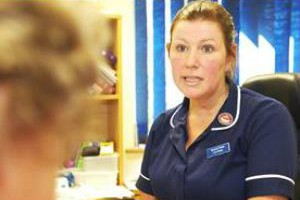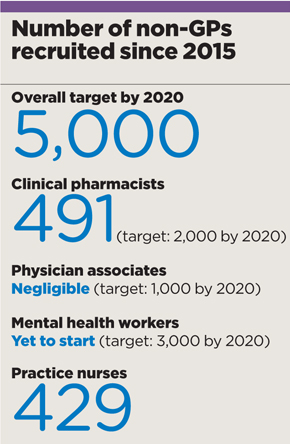How the GP Forward View is plugging gaps with non-GPs


forward view 2017 logo 580px
In the run-up to the 2015 general election, health secretary Jeremy Hunt announced that – alongside 5,000 new GPs – practices would benefit from 5,000 extra staff by 2020.
The new staff would include existing roles, such as practice nurses, but also pharmacists and a completely new role – physician associates (PAs).
In the GP Forward View a year later, NHS England added two more roles to the mix: mental health workers, and ‘medical assistants’, who would help GPs keep on top of their admin.
Yet two years on from Mr Hunt’s pledge, practices could be forgiven for wondering where this merry band of helpers is.
In terms of pharmacists, the Government has done pretty well. Since 2015, 491 have been placed in 658 practices, with plans to recruit 400 more in each of the next two years. Overall, it is looking to place 2,000 pharmacists in practices by 2020.
But a closer look at the figures suggest this might be harder than it seems. Recruitment has slowed, with only 21 of the 491 pharmacists put in place since the GP Forward View was announced. Practices are continuing to apply for support, however, and many report positive experiences. But some have been put off because they have to pay for the pharmacist, albeit at a discounted rate.

p12 april 2010 non gp recruits since 2015 290px
The number of practice nurses is also increasing. Between September 2015 and September 2016, the number of whole-time-equivalent practice nurses increased by 429 (2.8%) and NHS England has not yet launched its measures to increase the number of nurses in primary care. But any boost is likely to be attenuated by the recent removal of bursaries for trainee nurses, which has already seen a 20% reduction in application rates for nursing courses.
Elsewhere, Health Education England is starting to train medical assistants to assist GPs with paperwork, as well as thousands of PAs – who will not be medically qualified but will be able to undertake clinical work and potentially prescribe – with a view to 1,000 of them being available by March 2019.
NHS England director of primary care Dr Arvind Madan admits few PAs have been placed in practices so far, and there are concerns over whether unregulated professionals should be able to perform functions normally performed by GPs. Yet there are major incentives to becoming a PA: science graduates will each receive £9,000 in annual course fees for the two-year postgraduate course and £6,000 as a maintenance bursary, totalling more than £31,000 each.
There has also been confusion over the other piece of the workforce jigsaw – mental health workers – in terms of where they would be based and how they would be paid for. Pulse revealed last month 3,000 mental health workers will be funded by local commissioners and delivered through IAPT providers, rather than being ‘practice based’ as the GP Forward View promised.
RCGP chair Professor Helen Stokes-Lampard has called for ‘assurances from NHS England that the therapists will be genuinely integrated with general practice, not simply an expansion of existing IAPT teams’.
There are also plans to upskill receptionists, clerical staff and practice managers – but there has been little sign of the £50m committed for this as yet.
As NHS England is keen to point out, it will take time for these groups of staff to come through and for practices to start to benefit. However, as with the recruitment of GPs, time is not on practices’ side.











